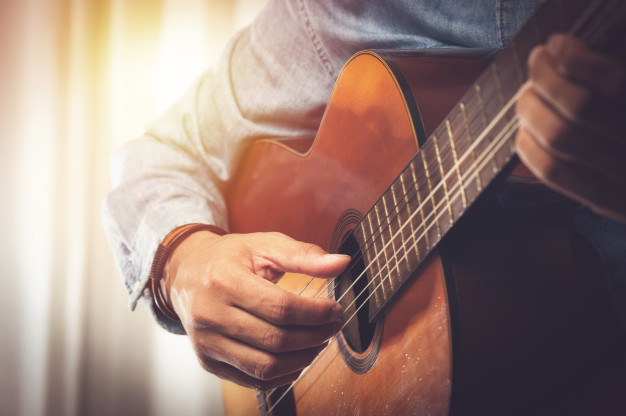Do you want to learn how to play the acoustic guitar before buying an acoustic guitar? If so, nothing can make you better like actual engagement. It is important to understand the basic of playing the guitar.
In this guide, we will be discussing a few basic points that you may need to keep in mind as you learn to play Acoustic guitars. These guidelines apply to both beginners and experts, and these can greatly improve your learning experience.
Posture and Seating Requirement
Firstly, your seating and posture matter a lot when you are playing the guitar. You need to be sitting on something stable but comfortable. Basically, anything that restricts your movement is already out of the consideration.
This means that chairs and seats with arms can cause quite a challenge to your extremities, especially to your left arm and elbow. Low chairs and stools can be an ideal seating choice, but high stools cause an unreasonable difficulty and discomfort on your part. The tall seating height can cause your legs to slope downward, thus affecting how your acoustic guitar settles as you play.
As a rule of thumb, you can choose a seat that allows your knees to be at a 90-degree angle. It may be better if your legs are at slight angle towards your upper torso. Also, make sure that your arms are free from obstructions.
Guitar Anatomy
This instrument is played by demonstrating the chords as you read them. Here are the important parts of the guitar you will be likely to engage in as you play.
- Fretboard
This is the lengthy narrowed portion of the guitar with stretched out strings and where you will be placing your left-hand fingers to play the chords. At the inner end of the fretboard is the round opening of the body, and that is where will you place your right hand as you strum. Your right arm and elbow will then rest at the top of the guitar body.
- Machine Heads
At some point, you will be taught how to replace strings and adjust them. This is also called tuning the guitar. It is done by twisting the knobs or the “heads” to adjust the tightness of the string, thus raising or lowering the pitch of each.
- Guitar Strings
This part of the instrument is strummed to create a sound. Each string has a corresponding note, with varying thicknesses. The thickest string is at the top, and the thinnest at the bottom. These strings are labelled E, A, D, G, B, E strings – respectively from the top to the bottom.
Focus on Chords
While learning notes is also good, it is advisable for beginners to focus on learning chords first and how to fret them correctly. When it comes to playing Acoustic Guitars, use the tips, and not the fleshy part of your fingers, to play the chords.
A tip to play the acoustic guitar is accurately is to place your fingers in the middle of the frets. This helps to prevent deadened notes.
Conclusion
Now that we got that out of the way, you can now proceed to learning the theories and techniques of playing Acoustic Guitars. Just be sure to remember all the important points we mentioned beforehand. Good luck!


